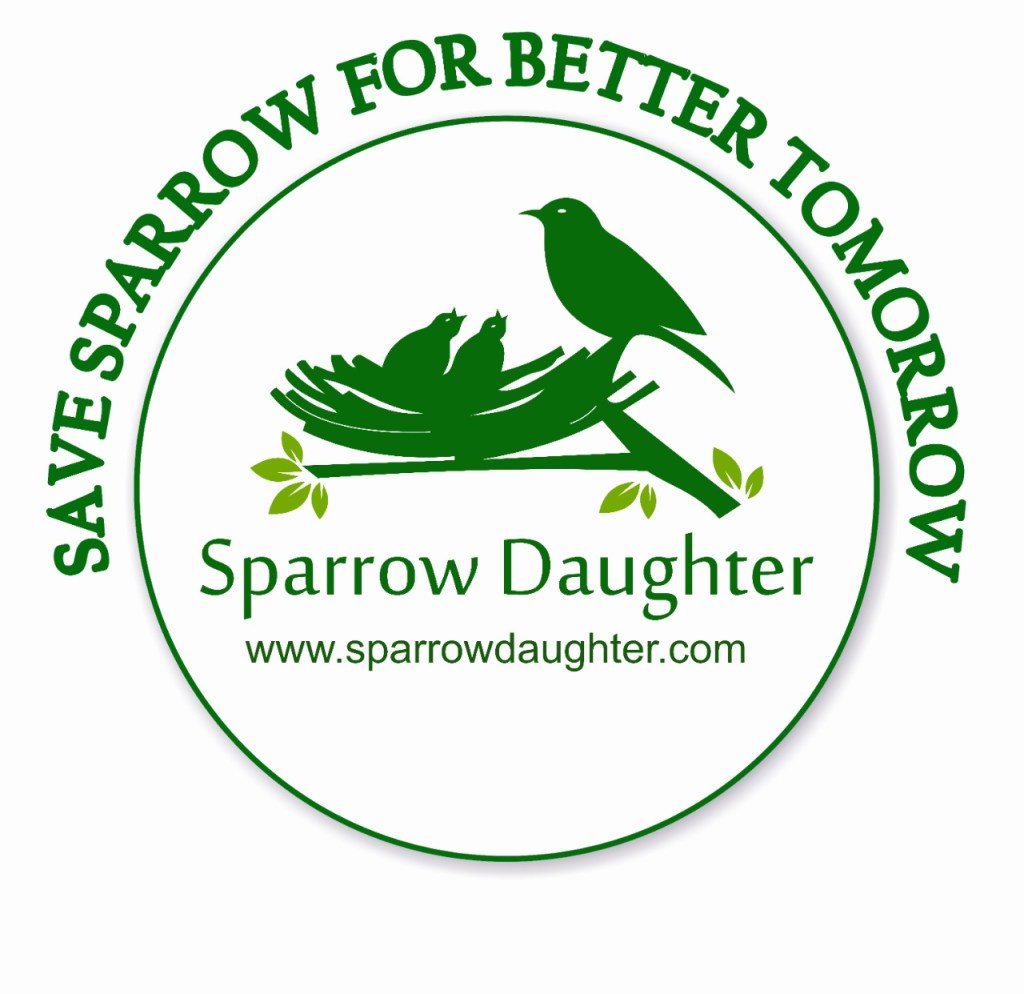The sparrow population has suffered a drastic decline in recent years due to heedless urbanisation. This has had a devastating effect on the sparrows’ habitat, as well as on the whole ecosystem in which sparrows were integral.
Urbanisation is defined as the process of population growth and increasing human activity in cities and towns. As cities grow and sprawl, sparrow habitats are further destroyed or disrupted, making it hard for sparrows to find a place to nest or hunt for food.
Sparrows need open spaces to feed and breed, but the urban landscape often does not provide them with enough of such areas. We cut down trees, develop land, and build roads that sparrows cannot cross safely. As a result, sparrow populations decline as they have fewer places to fly to.
A recent study has revealed that sparrow populations are decreasing more quickly in urban areas than in rural ones. This shows how heedless urbanisation is having a direct impact on the sparrow population.
It is time for us to take action to save sparrows from extinction. We can start by taking steps such as creating more green spaces in cities, planting trees and shrubs that sparrows like, and building sparrow-friendly infrastructure.
We must also become more aware of our impact on the sparrow population and strive to be more mindful of the environment. Every small action we take can make a difference in sparrows’ lives and contribute to their survival.
Bird Habitats Affected by Urbanization
Urban sprawl is one of the main causes for sparrow habitat destruction. Urban sprawl results in the cutting down of trees, construction of roads, and development of land – all of which makes it difficult for sparrows to find enough space to feed and breed.
Another way urbanisation affects sparrow habitats is through air and noise pollution. Pollution from industry, vehicles and other sources have an adverse effect on sparrows’ health and wellbeing. The sparrows’ ability to find food is also hindered due to the polluted air.
In order to protect sparrow habitats from urbanisation, it is important that we take steps such as planting trees and shrubs that sparrows like, creating green spaces in cities, and building sparrow-friendly infrastructure. We can also build birdhouses for sparrows so that they have a safe place to nest.
By taking these steps, we can help sparrows survive the effects of urbanisation and ensure that their habitats remain safe and healthy.
Dependence of Sparrows on Insect life, Pollen seeds & Grass
Sparrows depend on a variety of food sources, including insects, pollen, and seeds from grasses. But with heedless urbanisation sparrows not only have less space to hunt for these food items, but also the insects that sparrows feed upon are being wiped out due to the destruction of their natural habitats.
This makes sparrows increasingly dependent on the availability of food sources in urban areas, which are much less abundant than in rural areas.
In addition, sparrows also need green and open spaces to fly around and build nests, which is made difficult by the lack of these kinds of places in urban areas due to heedless urbanisation.
Pesticides effect on Food Production
Urban sparrows also face another threat - the use of harmful pesticides in urban areas. Pesticides are used to protect crops from insects, but they also affect sparrows that feed on these insects or on the plants treated with them. Furthermore, sparrows can be poisoned by consuming pesticide-contaminated food or water.
Pesticides reduce sparrows’ food sources, which can lead to malnutrition and reproductive failure in sparrows. This further contributes to sparrow extinction due to heedless urbanisation
Lack of High protein-rich food due to careless Urbanisation
Sparrows need a wide variety of food sources to stay healthy and reproduce. But due to the destruction of sparrow habitats, sparrows are often forced to feed on low-quality food items that do not contain enough nutrients. This further exacerbates sparrow extinction due to heedless urbanisation.
We must make sure sparrows have access to high-quality, nutrient-rich food sources in order to ensure their survival. Planting sparrow-friendly plants and providing sparrows with bird feeders are great ways to help sparrows get the nutrients they need for a healthy life.
Providing Sparrow friendly leather bird-houses and bird feeders
Creating sparrow-friendly habitats can help sparrows survive and thrive in urban areas. We can create sparrow conservatories using leather bird houses, sparrow-friendly plants, and bird feeders as a way to provide sparrows with shelter and food sources.
These Bird houses provide sparrows with a safe place to build nests and breed, while bird feeders give sparrows easy access to food sources. This will not only help sparrows in their fight against extinction due to heedless urbanisation, but also help sparrows become more dependent on humans for food.
These sparrow conservatories can be located in green and open spaces such as parks or gardens, providing sparrows with a safe place to live and stay healthy.
Conclusion
Sparrow extinction due to heedless urbanisation is an alarming issue that deserves our attention and action. We must take steps to protect sparrow habitats from destruction, such as creating green spaces in cities, planting trees preferred by sparrows, and building sparrow-friendly infrastructure. By taking these steps, we can help sparrows survive the effects of urbanisation and contribute to their survival. Let us all come together to protect sparrows from extinction due to heedless urbanisation! Every small action we take can make a difference and secure sparrows a future!
